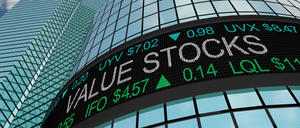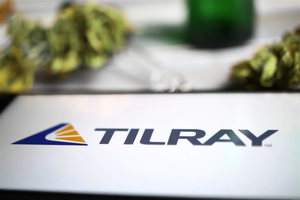The "Cement Industry Market Size & Forecast by Value and Volume Across 80+ Market Segments by Cement Products, Distribution Channel, Market Share, Import - Export, End Markets - Databook Q2 2025 Update" report has been added to ResearchAndMarkets.com's offering.
The global cement market is expected to grow by 5.5% annually to reach US$236.3 billion in 2025. Global cement market recorded strong growth during 2020-2024, achieving a CAGR of 6.2%. Growth momentum is expected to remain positive, with the market projected to expand at a CAGR of 5.2% during 2025-2029. By the end of 2029, the cement market is projected to expand from its 2024 value of US$224.1 billion to approximately US$289.0 billion.
This report provides a data-rich, forward-looking analysis of cement industry, covering market size, pricing trends, production, consumption, and segment-level performance from 2020 to 2029. It examines cement demand across key residential, non-residential, and infrastructure sectors alongside granular segmentation by cement type, distribution channel, end-user profile, and city tier.
The global cement industry is navigating a pivotal transformation driven by decarbonization mandates, infrastructure-led recovery, and emerging market shifts. While demand in developed markets has moderated due to housing downturns and macroeconomic uncertainty, infrastructure and industrial construction in Asia, the Middle East, and Africa continue to fuel volume growth.
Industry leaders are responding to climate targets and investor pressure by deploying carbon capture technologies, scaling blended cements, and restructuring supply chains. With evolving green procurement regulations and capital market scrutiny, firms that embrace ESG-compliant operations, digital efficiency tools, and circular resource strategies will maintain competitiveness and resilience.
The global cement industry is transitioning from a volume-driven model to a sustainability-led, digitally optimized sector aligned with infrastructure, climate, and policy shifts. While regional disparities persist, decarbonization, digitalization, and procurement transparency are universal priorities shaping the competitive landscape. Firms that scale low-clinker innovation, deploy CCUS and circular resource strategies, and maintain supply chain resilience will remain central to global infrastructure delivery. Strategic success will depend on operational agility, policy alignment, and the ability to monetize sustainability leadership. With climate compliance becoming a license to operate, the cement sector is now at the frontline of delivering low-carbon urban and industrial growth worldwide.
Regional Demand Patterns Are Diverging Amid Infrastructure and Housing Cycles
- Asia-Pacific Continues to Anchor Global Volume Despite Local Headwinds: China remains the largest global producer and consumer, though cement output has declined due to real estate contraction and tighter environmental controls. India and Southeast Asian markets like Indonesia and Vietnam are sustaining regional growth through government-led infrastructure and industrial park development. Export-reliant economies are recalibrating volumes as demand softens in China and the Philippines.
- North America Shows Mixed Recovery Trends: In the U.S., cement demand is buoyed by federally funded infrastructure projects, including highway upgrades, ports, and clean energy facilities. However, high interest rates and construction inflation are dampening private housing and commercial development across Canada and parts of the U.S.
- Europe Is Restructuring Cement Production Amid Carbon Compliance: EU nations are advancing cement decarbonization via carbon pricing, waste co-processing, and green procurement mandates. Demand is steady in public retrofits and energy-efficient building upgrades, but private sector starts remain weak due to economic pressures and energy costs.
- Middle East and Africa (MEA) Emerging as Growth Hotspots: Cement demand is rising across Saudi Arabia, Egypt, and Nigeria due to urban megaprojects, energy infrastructure, and housing programs. Capacity expansions are being aligned with Vision 2030 (Saudi Arabia), National Housing Strategies (UAE, Egypt), and Belt & Road-backed construction.
Global Leaders Are Accelerating Low-Carbon Innovation and Supply Chain Realignment
- Carbon Capture and Utilization Is Being Scaled Across Regions: Holcim, Heidelberg Materials, and Cemex have announced or initiated CCUS (Carbon Capture, Utilization, and Storage) projects in Europe, North America, and Asia. Governments in Norway, Canada, and Germany are co-financing pilot and commercial-scale plants tied to national decarbonization strategies.
- Low-Clinker and Blended Cements Are Expanding Across All Markets: CEM II and CEM III variants using slag, fly ash, limestone, and calcined clay are becoming mainstream in public procurement in the EU, U.S., and parts of Asia. Demand for SCMs (Supplementary Cementitious Materials) is rising globally, creating sourcing challenges in regions with limited local supply.
- Digitization of Operations and Logistics Is Gaining Traction: Cement producers are deploying AI-powered kiln optimization, digital emissions monitoring, and predictive maintenance to boost efficiency. End-to-end cement logistics and inventory platforms are helping reduce lead times and align dispatches with just-in-time site delivery across markets.
Production Is Constrained by Energy Costs, Environmental Compliance, and Material Access
- Fuel and Power Volatility Are Pressuring Global Cost Structures: Global energy disruptions, coal market volatility, and rising electricity tariffs are affecting kiln operations, especially in Europe, South Asia, and Latin America. Producers are transitioning to alternative fuels (RDF, biomass) and investing in WHR (waste heat recovery) and captive solar to manage volatility.
- Environmental Regulation and Carbon Pricing Are Increasing Operational Complexity: EU ETS, UK ETS, and national CO? taxes are raising compliance costs for high-emission plants, pushing firms to retrofit older facilities. Regulatory frameworks like Buy Clean (U.S., Canada) and carbon disclosure requirements are influencing procurement access and investor ratings.
- SCM Supply Constraints Are Affecting Blended Cement Scalability: Shortages of fly ash and slag - driven by the phasing out of coal-fired power plants and steel sector downturns - are constraining clinker substitution. Some firms are piloting novel SCMs such as calcined clay, waste glass powder, and volcanic ash, with mixed results depending on regional availability.
Cautiously Optimistic Outlook Tied to Infrastructure, Innovation, and Green Procurement
- Public Infrastructure Investment Will Anchor Global Cement Demand: Government stimulus and resilience funding in the U.S., India, EU, and MEA are expected to drive cement usage through 2026.Cement remains integral to roads, rail, flood defense, logistics, and energy transition infrastructure globally.
- Green Procurement Mandates Will Shape Product and Market Access: Public and institutional buyers are increasingly specifying low-carbon materials under green building codes (e.g., LEED, BREEAM, EDGE). Lifecycle carbon data, EPDs (Environmental Product Declarations), and compliance with regional embodied carbon limits are becoming baseline criteria.
- Innovation Funding and Carbon Finance Will Support Competitive Transition: Multilateral climate finance, green bonds, and ESG-linked loans are enabling capex-heavy cement decarbonization and digital transformation projects. Firms aligning with Science-Based Targets and validated net-zero pathways are securing preferential capital access and procurement advantage.
Risks Are Intensifying Across Supply Chains, Compliance, and Geopolitical Disruption
- Raw Material and Fuel Dependencies Expose Regional Vulnerabilities: High import dependency for clinker, gypsum, and fuel in markets like Bangladesh, the Philippines, and parts of Africa creates supply and pricing risk. Geopolitical tensions (e.g., Red Sea disruption, Russia-Ukraine war) are impacting clinker shipping routes and energy logistics globally.
- Carbon and Environmental Regulation Are Becoming Market Entry Barriers: Firms without verifiable carbon strategies may face exclusion from key procurement channels and public contracts in EU, Canada, and the U.S. Rapidly evolving rules around emissions disclosure and waste management create compliance and reputational risks.
- Uneven Investment in Innovation May Widen Regional Competitive Gaps: Large players with access to green capital and R&D scale are progressing faster in CCUS and low-carbon cement, while smaller firms in emerging markets risk falling behind. Without coordinated industrial policy and financial support, many regional producers may struggle to meet future compliance thresholds.
For more information about this report visit https://www.researchandmarkets.com/r/jhu4qm
About ResearchAndMarkets.com
ResearchAndMarkets.com is the world's leading source for international market research reports and market data. We provide you with the latest data on international and regional markets, key industries, the top companies, new products and the latest trends.
View source version on businesswire.com: https://www.businesswire.com/news/home/20250714554649/en/
Contacts
ResearchAndMarkets.com
Laura Wood, Senior Press Manager
press@researchandmarkets.com
For E.S.T Office Hours Call 1-917-300-0470
For U.S./ CAN Toll Free Call 1-800-526-8630
For GMT Office Hours Call +353-1-416-8900






